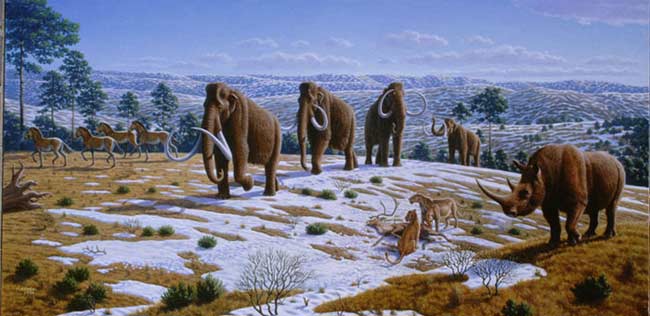Scientists to Resurrect Ancient Gene to Replay Evolution

The movie "Jurassic Park" was a lesson in how resurrecting extinct organisms can go awry. A new project plans to take a safer route: resurrect a single gene from an extinct species of bacteria. This tiny snippet of DNA will be implanted in modern-day bacteria, with the goal of seeing whether evolution can be replayed in the lab.
In previous work, paleogeneticist Eric Gaucher from the Georgia Institute of Technology and his colleagues reconstructed earlier forms of a common gene by computing the way different lineages diverged to create the bacterial family tree.
"It is a bit like what historical linguists do when they infer the spelling or pronunciation of an ancient word from its modern derivatives," Gaucher says. "Except, we are working with the DNA alphabet."
As part of NASA's Astrobiology: Exobiology and Evolutionary Biology program, Gaucher and Betul Kacar, also from Georgia Tech, now plan to plug one of their reconstructed genes in a modern organism's DNA.
If this genetic anachronism evolves forward along one of the branches that the researchers have computed, then this will provide some verification of this molecular genealogy technique, as well as give support to the notion that evolution is repeatable and not simply a matter of chance.
Ghosts in the code
It is hopeless to think that dinosaur DNA could be recovered from mosquito blood trapped in amber (or from anywhere else for that matter), as the molecular code isn't likely to survive 65 million years.
Sign up for the Live Science daily newsletter now
Get the world’s most fascinating discoveries delivered straight to your inbox.
The chances are far better for more recent extinctions. A nearly complete DNA sequence of the woolly mammoth (which died out about 11,000 years ago) was published last November, giving some people ideas about bringing these giants back to life.
However, finding frozen hair and tissue samples is not the only way to isolate extinct DNA. Gaucher and his colleagues have shown that it is possible to estimate the genes in organisms that lived several billions of years ago by doing a genetic survey of their family tree.
It is a bit like guessing what color your great-great-great grandmother's eyes were by cataloguing the eye colors of all her living descendants and playing back the rules of inheritance. In the case of gene reconstruction, Gaucher's team estimates the DNA code of an extinct life form by comparing the codes of its living descendants and using theories of genetic mutations.
Sick with age
Gaucher and Kacar now plan to insert one of these ancient genes into a modern E. coli bacteria.
"These bacteria are going to be sick," Gaucher explains. That's because this gene codes for an essential protein, but the outdated version being inserted into the organisms works best at a temperature of 55 degrees Celsius, far above the 37 degrees Celsius that E. coli prefers.
Like a molecular Rip Van Winkle, the ancient EF gene will feel strong evolutionary pressure to adapt to its new cooler surroundings.
"It's difficult to see evolution, short of building a time machine," Gaucher says, but their technique may be the next best thing.
The scientists will be verifying whether the mutations in the inserted gene follow the same path as was taken by the line of ancestor bacteria as they evolved over millions of years.
"I do believe that it is now possible, with tools that have recently been developed, to 'replay the molecular tape of life,' even if it is one (or a few) molecules at a time," says Belinda Chang of the University of Toronto, who is not involved in this work.
- News and Information about Extinctions
- Extinct Tasmanian Tiger's DNA Revived in Mice
- Gallery: Mammals Facing Extinction
This article was provided to LiveScience by Astrobiology Magazine.










